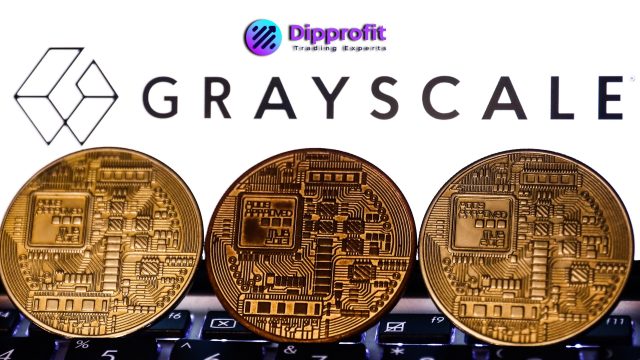Grayscale Bitcoin Trust (GBTC) is seeing a lot of money being taken out, and people are wondering why. There are a few reasons behind Grayscale Bitcoin Trust outflows trend.
Factors Causing Grayscale Bitcoin Trust Outflows

One reason for the Grayscale Bitcoin Trust outflows is that there are now other Bitcoin funds that people can invest in, so they might choose to move their money from GBTC to these other funds.
Another reason is that people’s feelings about GBTC can change, which can lead them to take their money out. If people think there are better investments or they are worried about the risks, they might decide to invest their money elsewhere.
Changes in the price of Bitcoin and how the market is doing can also affect how confident people feel about GBTC, which might lead them to move their money out.
Changes in rules and regulations, as well as how the cryptocurrency market is developing, can also impact whether people choose to keep their money in GBTC. If there is uncertainty about the rules or if the rules change, people might decide to move their money out of GBTC.
Additionally, how well GBTC is doing compared to other Bitcoin funds and the wider cryptocurrency market can influence people’s decisions. If GBTC is not doing as well as other funds, people might choose to move their money elsewhere.
There are several reasons why people are taking their money out of Grayscale Bitcoin Trust. Competition from other Bitcoin funds, changes in how people feel about GBTC, market conditions, rules and regulations, and how well GBTC is doing compared to other funds all play a part in people’s decisions.
See Also: Bitcoin ETF Takes Wall Street By Storm, Ethereum ETFs Next
Impact of Outflows on Grayscale Bitcoin Trust and Bitcoin ETF Market

The Grayscale Bitcoin Trust outflows doesn’t just affect GBTC—it also impacts the whole market for Bitcoin exchange-traded funds (ETFs).
The Grayscale Bitcoin Trust outflows can make the trust’s assets under management (AUM) go down. This might make it harder for GBTC to get new investors and stay competitive.
Since GBTC is one of the biggest and most well-known Bitcoin investment options, its performance can influence how people view Bitcoin ETFs in general.
The Grayscale Bitcoin Trust outflows can also change how investors feel about Bitcoin ETFs. If they see GBTC as less attractive because of the outflows, they might be less likely to invest in other Bitcoin ETFs as well.
This could lead to less demand for Bitcoin ETFs overall, which could affect how much they’re traded and how easy it is to buy and sell them.
Moreover, the outflows from GBTC can affect the prices and performance of Bitcoin ETFs. As people sell their GBTC shares, it can push the price down, which might mean lower returns for investors who keep their money in GBTC.
This could also impact the prices of other Bitcoin ETFs, as investors might change their expectations based on how GBTC is doing.
Additionally, the Grayscale Bitcoin Trust outflows could change how regulators see Bitcoin ETFs. If they think people are taking their money out because they’re not happy or don’t trust Bitcoin ETFs, regulators might decide to make the rules stricter. This could make it harder for Bitcoin ETFs to get new investors and grow.
See Also: Bitcoin ETF Takes Wall Street By Storm, Ethereum ETFs Next
In conclusion, the outflows from Grayscale Bitcoin Trust can have a big impact on the trust itself, the wider Bitcoin ETF market, and how regulators view Bitcoin investments. Understanding these impacts is important for investors and others involved in the Bitcoin market.
We Hope you’ve learned a lot from this article!! We’re glad you did. Join our telegram community to get up-to-date news, educational materials, free online classes, market analysis, and crypto futures trade signals that will help you grow and become profitable


